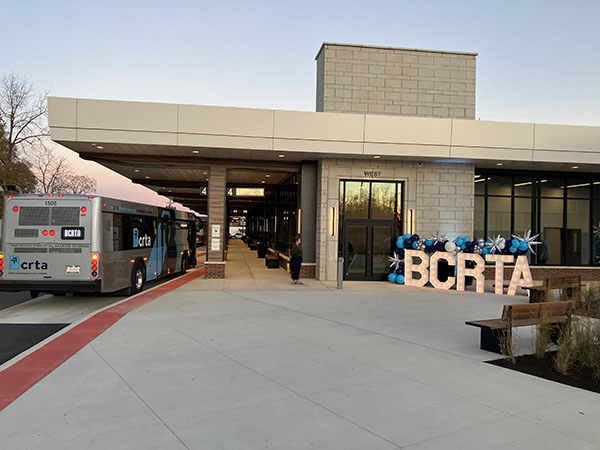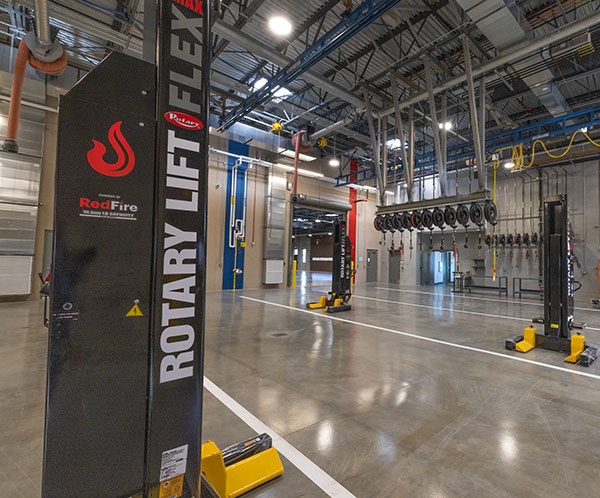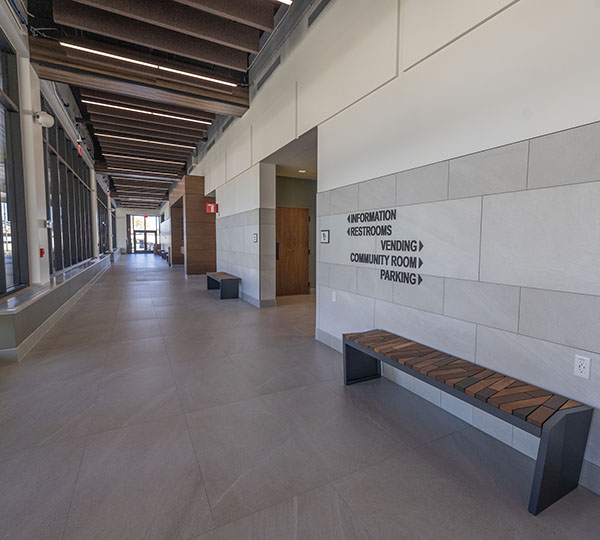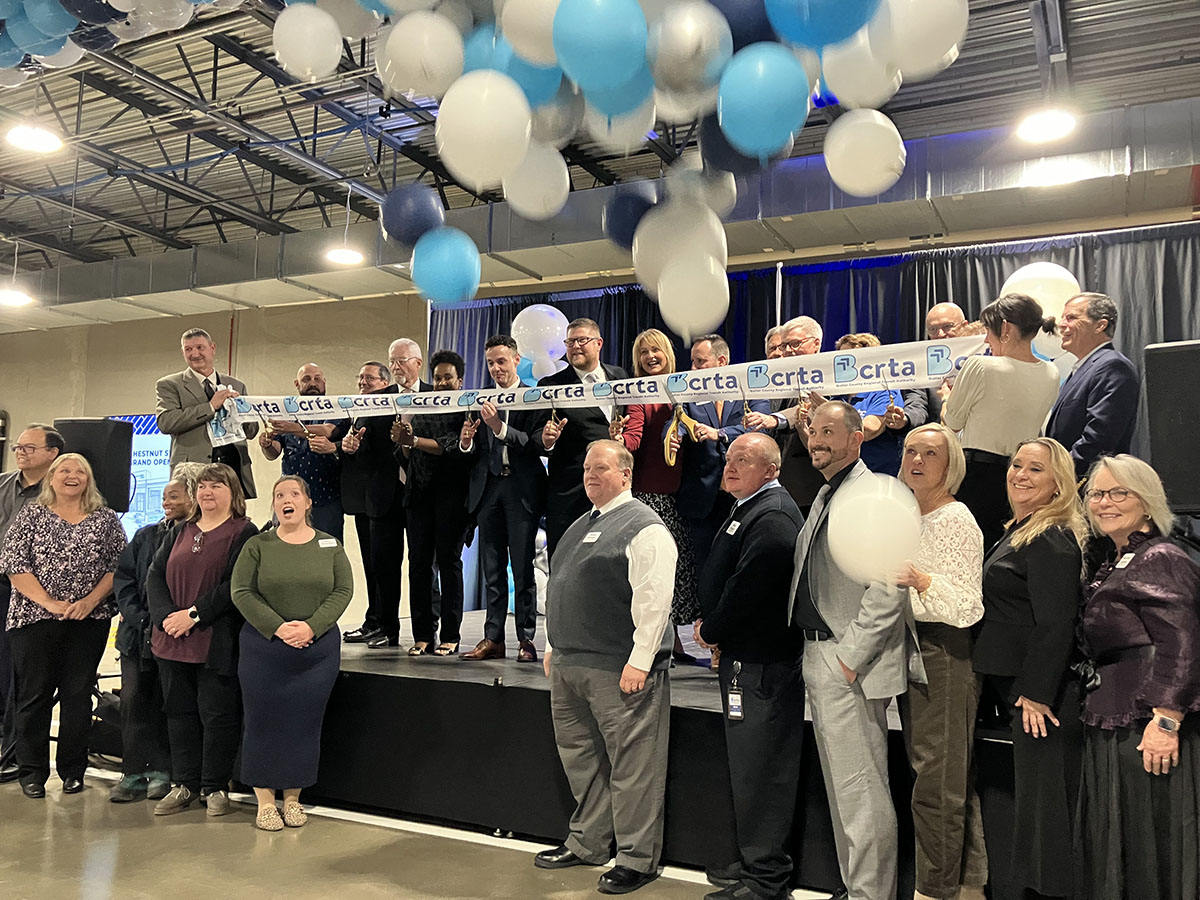Community, state officials celebrate 'future ready' Chestnut Street Station
BCRTA’s first major infrastructure project in nearly 30 years provides opportunity and connection

Community, state officials celebrate 'future ready' Chestnut Street Station
The grand opening of Chestnut Street Station, the new multimodal transportation center located at 97 W. Chestnut St. in Oxford, was celebrated Nov. 6 with a large gathering of community members, elected officials, representatives from state and national transportation associations, and BCRTA leadership.
The new transportation hub is the “first major infrastructure investment in nearly 30 years” for the Butler County Regional Transit Authority (BCRTA), Matthew Dutkevicz, BCRTA executive director, said during the opening celebration.
This more than $25 million investment in Butler County “created construction jobs, supported local businesses, and created something meaningful and permanent for our community,” said Chris Lawson, '05, MEn '16, president of the BCRTA board of trustees, and executive director of Miami University’s Office of ASPIRE (Office of Advancing Strategy, Partnerships, Institutional Relations, and Economy).
The majority of funding for the project, which broke ground in January 2024, was provided by the U.S. Department of Transportation Federal Transit Administration, part of the Bipartisan Infrastructure Law funding. Miami University contributed the 40-year land lease and $1.6 million, and BCRTA provided more than $3 million in locally generated revenues.
“We definitely punched above our weight in terms of value, efficiency, and effectiveness,” Dutkevicz said, noting that the project did not receive any local tax revenues, municipal contributions, or general fund contributions.

Chestnut Street Station
BCRTA now has a home in Oxford, with offices in the new facility. It will staff and operate the facility as well as maintain the facility and grounds leased to the BCRTA by Miami.
The nearly 60,000 square foot facility brings passenger services and behind-the-scenes operations under one roof. Indoor storage for 36 buses will provide faster morning start-up times and better working conditions, Lawson said.
Updated bus routes, which start and end at the station, have been in service since the start of fall semester.
The facility includes:
- Comfortable indoor waiting areas with WiFi and charging
- Public restrooms
- Real-time bus arrival signage
- A reservable community room
- Covered bus transfer areas
- Bus maintenance, fueling, washing, and indoor storage areas for nearly 40 buses
BCRTA’s fixed routes and SafeRide service remain free for all riders — students, employees, and community members — no ID required.

Opportunity in motion
Chestnut Street Station has been more than a decade in the making, Lawson said. “It began as a simple but powerful idea — to provide more opportunities for people to move — and has become a reality that will serve our community for generations,” he said.
“BCRTA proudly operates Ohio’s only county-wide, fare-free, fixed route bus system,” he said. Coupled with the new transit hub, “It means opportunities for students to make it to class; for individuals living with disabilities to be independent, and opportunities for seniors to maintain their independence. And it's an opportunity for a worker to take a new job, one that (may have been) previously out of reach,” Lawson said.
Supporting Oxford
Oxford Mayor Bill Snavely said Oxford is proud to be the host city for this transport hub.
The project supports the three major goals of the city of Oxford, Snavely said, in the areas of:
- Sustainability
- Economic development
- Housing for everyone
David Prytherch, professor of Geography, co-chair of the Sustainability Council's Transportation Working Group, and Oxford City Council member, said, "This historic investment in connectivity and sustainability reflects more than a decade of collaboration, linking robust local transit to the Oxford Area Trails, expanding GoBus service, and long-distance Amtrak trains.
"All this, and it brings BCRTA offices and jobs to Oxford."

Future ready
Arthur Guzzetti, American Public Transportation Association vice president for policy and mobility, who came from Washington, D.C. to attend the opening event, noted that “this is a ‘station plus’ and a sign you have an eye on the future.”
David Creamer, senior vice president for finance and business services at Miami University, said he has worked with Dutkevicz for 14 years to “create a vision of a multimodal station.”
“This is not where we intend to stop — we have a broader vision and will keep working toward that,” he said.
Lawson said, “this station is future ready. We have infrastructure in place for battery, electric, and hydrogen powered vehicles. We’re positioned to support a future Amtrak platform network in Oxford to Chicago, Cincinnati, and New York” with the Cardinal Line.
“This is infrastructure investment that will serve us for the next 50 years,” he said.
Dutkevicz said Ohio’s GoBus recently announced a major expansion of its intercity transit network. (Read the announcement on the transportation.ohio.gov website about the new GoBus routes that will include new stops in Oxford, Middletown, and Dayton and connections to 32 universities, including Miami).
Take a tour of the station with Dutkevicz:
Grand opening event speakers
During the opening event program, Dutkevicz thanked Creamer “whose insight and leadership made all this possible.”
He also noted the work of the late Ben Spilman — retired captain of Miami University Police, director of Parking and Transportation Services, and a founding member of Miami’s Sustainability Committee. Spilman helped to lay out “some of the foundations of the things that you see here today,” Dutkevicz said.
Other speakers included:
Ohio State Sen. George Lang; Ohio State Rep. Diane Mullins; Don Dixon, president of the Butler County Commission; T.C. Rogers, vice president of the Butler County Commission; and Andy Reser, manager of transportation programming, OKI Regional Council of Governments.

Sustainability at Miami University
Miami University is committed to carbon neutrality on its Oxford campus by 2040 (Miami 2040 Climate Action Plan). Miami is decarbonizing its campus through energy systems transformations, including geothermal exchange and solar energy, and has achieved a 50% reduction in utility-based carbon emissions since 2008. Miami received its third AASHE STARS (3.0) Gold rating in summer 2025 in recognition of sustainability achievements and is named on the Princeton Review’s 2026 Guide to Green Schools.